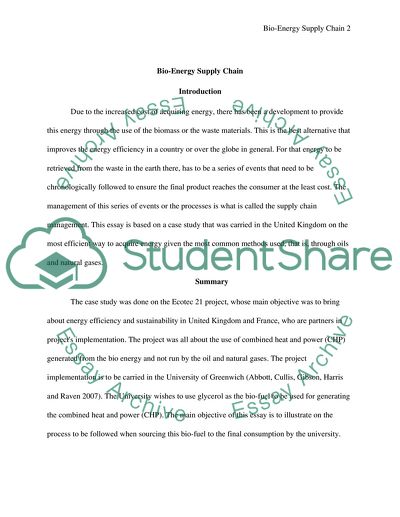Cite this document
(“Bio-Energy Supply Chain Case Study Example | Topics and Well Written Essays - 4000 words”, n.d.)
Bio-Energy Supply Chain Case Study Example | Topics and Well Written Essays - 4000 words. Retrieved from https://studentshare.org/environmental-studies/1799931-bioenergy-supply-chain
Bio-Energy Supply Chain Case Study Example | Topics and Well Written Essays - 4000 words. Retrieved from https://studentshare.org/environmental-studies/1799931-bioenergy-supply-chain
(Bio-Energy Supply Chain Case Study Example | Topics and Well Written Essays - 4000 Words)
Bio-Energy Supply Chain Case Study Example | Topics and Well Written Essays - 4000 Words. https://studentshare.org/environmental-studies/1799931-bioenergy-supply-chain.
Bio-Energy Supply Chain Case Study Example | Topics and Well Written Essays - 4000 Words. https://studentshare.org/environmental-studies/1799931-bioenergy-supply-chain.
“Bio-Energy Supply Chain Case Study Example | Topics and Well Written Essays - 4000 Words”, n.d. https://studentshare.org/environmental-studies/1799931-bioenergy-supply-chain.


